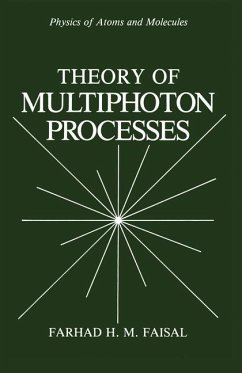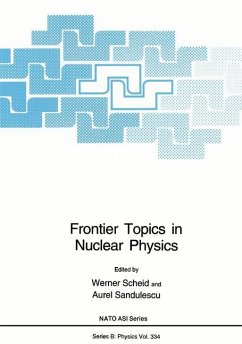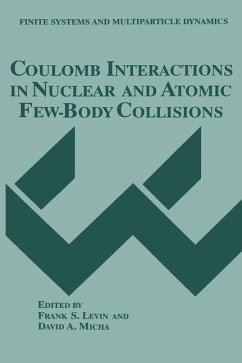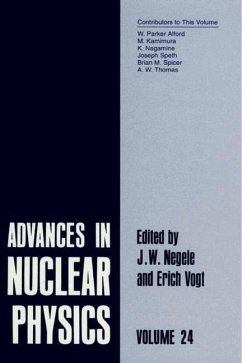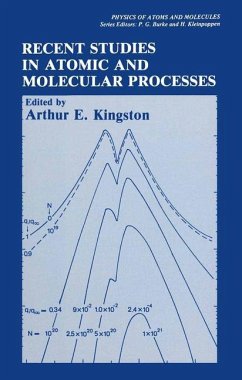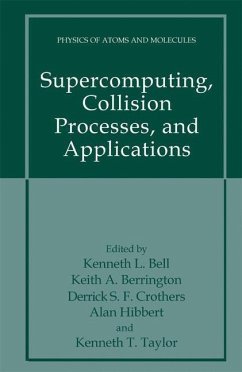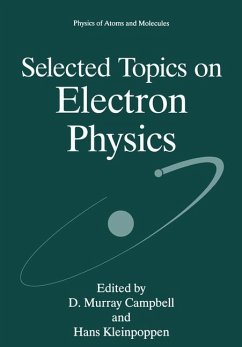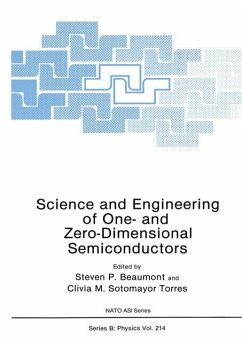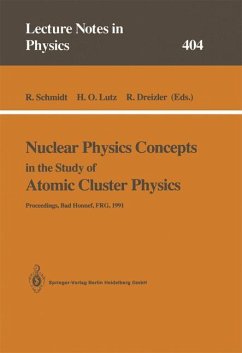
Zero-Range Potentials and Their Applications in Atomic Physics

PAYBACK Punkte
20 °P sammeln!
1 Basic Principles of the Zero-Range Potential Method.- 1.1 Introduction.- 1.2 Formulation of the Method.- 1.3 The One-Center Problem and Its Simple Applications.- 1.4 Separable Potentials and Scattering of Slow Electrons by Atoms.- 2 Trajectories of the Poles of the S-Matrix and Resonance Scattering.- 2.1 Preliminary Remarks.- 2.2 Trajectories of the Zeros of the Jost Function for ? = 0.- 2.3 The S-Matrix in a Two-Pole Approximation.- 2.4 The Case of ? ? 0 and Perturbation Theory for a Bound State Close to the Continuum.- 2.5 Trajectories of the Poles of the S-Matrix in the Case of ZRP and Se...
1 Basic Principles of the Zero-Range Potential Method.- 1.1 Introduction.- 1.2 Formulation of the Method.- 1.3 The One-Center Problem and Its Simple Applications.- 1.4 Separable Potentials and Scattering of Slow Electrons by Atoms.- 2 Trajectories of the Poles of the S-Matrix and Resonance Scattering.- 2.1 Preliminary Remarks.- 2.2 Trajectories of the Zeros of the Jost Function for ? = 0.- 2.3 The S-Matrix in a Two-Pole Approximation.- 2.4 The Case of ? ? 0 and Perturbation Theory for a Bound State Close to the Continuum.- 2.5 Trajectories of the Poles of the S-Matrix in the Case of ZRP and Separable Potentials.- 3 Zero-Range Potentials for Molecular Systems. Bound States.- 3.1 Many-Center Problems without External Fields.- 3.2 Potential Curves for a Two-Center System and Some Applications.- 3.3 Analytic Properties of the Potential Curves and Trajectories of the Poles of the S-Matrix.- 3.4 Perturbation Theory in the Presence of an External Electric Field.- 3.5 Perturbation Theory in the Presence of an External Magnetic Field.- 3.6 Solution of the Schrödinger Equation with the Help of ZRPs.- 4 Scattering by a System of Zero-Range Potentials and the Partial Wave Method for a Nonspherical Scatterer.- 4.1 The Partial Wave Method.- 4.2 Behavior of the Phases at Low Energy.- 4.3 The Variational Principle.- 4.4 Scattering by a System of ZRPs.- 4.5 ZRPs in the Theory of Multiple Scattering.- 5 Zero-Range Potentials in Multi-Channel Problems.- 5.1 Zero-Range Potentials for a Many-Component Wavefunction.- 5.2 Singlet-Triplet Splitting and Cross Sections for Elastic and Inelastic Scattering.- 5.3 Energy Terms of the e + H2 System and Trajectories of the Poles of the S-Matrix for a Two-Channel Problem.- 5.4 Electron Scattering by Molecules in the Separable PotentialApproximation.- 6 Motion of a Particle in a Periodic Field of Zero-Range Potentials.- 6.1 One-Dimensional Lattice in a Three-Dimensional Space. Bound States.- 6.2 Electron Scattering by Long Linear Molecules.- 6.3 Two-Dimensional Lattice in Three-Dimensional Space.- 6.4 Three-Dimensional Lattice and the Method of Ewald.- 7 Weakly Bound Systems in Electric and Magnetic Fields.- 7.1 Weakly Bound Systems in a Homogeneous Electric Field.- 7.2 Weakly Bound Systems in a Homogeneous Magnetic Field.- 7.3 Weakly Bound Systems in Crossed Electric and Magnetic Fields.- 7.4 A Combination of ZRPs and a Coulomb Field.- 8 Electron Detachment in Slow Collisions Between a Negative Ion and an Atom.- 8.1 ZRPs in Time-Dependent Quantum Mechanical Problems.- 8.2 Linear Approximation in Detachment Theory.- 8.3 Account of the Finite Size of the Colliding System.- 8.4 Production of Negative Ions in Three-Body Collisions.- 9 Time-Dependent Quantum Mechanical Problems Solvable by Contour Integration.- 9.1 General Time-Dependent Problems Solvable by Contour Integration.- 9.2 Adiabatic Approximation and Trajectories of the Poles of the S-Matrix.- 9.3 Ionization in Slow Atomic Collisions.- 10 Nonlinear Approximations in the Theory of Electron Detachment.- 10.1 Nonlinear Problems Solvable by Contour Integration. Sudden Approximation.- 10.2 Quadratic Approximation in the Theory of Electron Detachment.- 10.3 Quadratic Approximation (General Case).- 11 Time-Independent Quantum Mechanical Problems.- 11.1 Account of the Quantal Motion of the Nuclei in Detachment Theory.- 11.2 Time-Independent Quantum Mechanical Problems Solvable by Contour Integration.- References.





